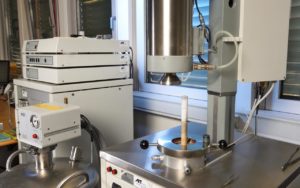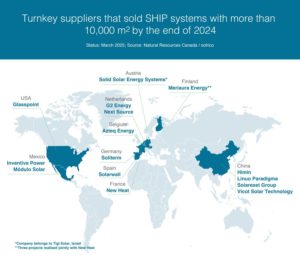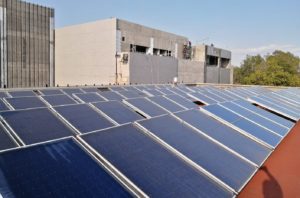“Develop a business case for thermal energy storage”
April 8, 2021
Thermal energy storage will undoubtedly play a key role in linking the electricity with the heat sector and in decarbonising buildings and industry. It should come as no surprise then that thermal energy storage (TES) technologies are the focus of the latest Innovation Outlook report published by the International Renewable Energy Agency (IRENA). We spoke with IRENA’s Renewable Energy Technologies and Markets Analyst, Francisco Boshell, who oversaw work on the report, about today’s importance of TES.
Photo: IRENA
What are your key takeaways from the report?
Boshell: TES can support the energy market transformation in several ways. It can be used to shift demand times for heating and cooling, provide flexibility across power systems in order to add variable renewable energy sources, couple the heating and cooling with the electricity sector, optimise the use of energy infrastructure and, more uniquely in the case of TES, offer the capability to store energy for long periods of time, such as in seasonal storage systems.
However, the value TES brings to the energy system is not well understood, or even properly compensated for. We are seeing more and more people discuss how to monetise the value created by battery technologies. I think a similar discussion needs to happen regarding TES; put a value on the benefits and stack revenues from TES technologies in order to develop a business case which will allow the technology to flourish and become an integral part of energy systems.

The report shows a breakdown of global TES capacity by application. How difficult was it to collect data for it?
Boshell: Quite difficult, I have to admit, considering there are no consolidated statistical data available anywhere. So, as a first step, we had to do our homework and develop these sorts of datasets. We had one person full-time for a couple of months, who was supported by part-time staff including experts from the Carbon Trust and the University of Birmingham.
We collected data on more than 400 commercial and pilot projects worldwide to estimate the TES capacity installed globally. This new and unique data inventory helped us develop a much better understanding of the market.
However, there are still some blind spots, as we explain in the report. For example, we note that many projects using aquifer thermal energy storage have not been properly documented. And who can say how many water tanks have already been used as small TES systems.
Several tables in the first section, Insights for Policy Makers, offer readers an in-depth look at the technical data and costs of relevant TES technologies in certain application areas. How did you arrive at these figures?
Boshell: Our cost estimates are based on the few projects displaying cost data and mainly the perspectives of TES researchers working for Birmingham University in the UK. They analysed secondary data on current technological progress, as the projects – of which there are more than 400 – do not show these parameters. To create the table shown below, we have filtered those sources to capture cost data purportedly based on real-life pilot projects, not theoretical estimations.
| Application | Type | Technology readiness | Efficiency | Total installed costs per kWh of storage capacity | Lifetime (in years) |
| DH / Buildings / Industry | Tank thermal energy storage (TTES) | Commercial | 50 to 90% | USD 8 to 11.1 | 20 to 30 |
| DH | Underground thermal energy storage (UTES) | Commercial | 6 to 90% | USD 0.4 to 4.2 | 14 to 30 |
| DH | Ice thermal storage | Commercial | 75 to 90% | USD 31.6 to 55.8 | 25 to 30 |
| Buildings | Solid state | Prototype | up to 90% | > GBP 20 | 10 to 15 |
| Buildings | UTES | Commercial | 6 to 54% | USD 0.7 to 4.2 | 14 to 30 |
| Buildings | Ice thermal storage | Commercial | 75 to 90% | USD 60 | 10 to 20 |
| Buildings | High-temperature phase change materials above 500 °C (PCM) | Demo | 90 to 92% | GBP 250 to 400 (GBP 50 for large-scale applications) | 10 to 20 |
| Buildings | Thermochemical heat storage (absorption system) | Prototype | 50 to 65% | USD 15 to 150 USD | 15 to 20 |
Techno-economic assessment of typical TES. According to the authors of the Innovation Outlook TES report, lifetime in years is more readily available than lifetime in cycles. Note: DH = district heating. GBP = British Pound, USD = United States dollar.
Source: IRENA
The TES technologies shown in the table above come with a wide range of cost estimates. Why is that?
Boshell: Most projects we got are based in Europe, Canada and the United States, a few in countries such as Malaysia and Jordan. Cost factors include the materials used, the maturity of the technology, the temperature range and the storage duration. Overall, the wide range in costs and efficiency reflects the level of uncertainty surrounding emerging technologies. In cooperation with experts from our 162 member countries, we intend to continue and expand our data collection and analysis in the coming years
What conclusions did IRENA draw from the report regarding future action?
Boshell: Our experiences with TES Innovation Outlook confirm that the lack of data on TES technologies is a big issue. IRENA will continue to broaden its analysis of sector coupling and seasonal storage. We can already see that TES will have an important role to play in both cases.
Organisations and reports mentioned in this article:
IRENA: https://www.irena.org


